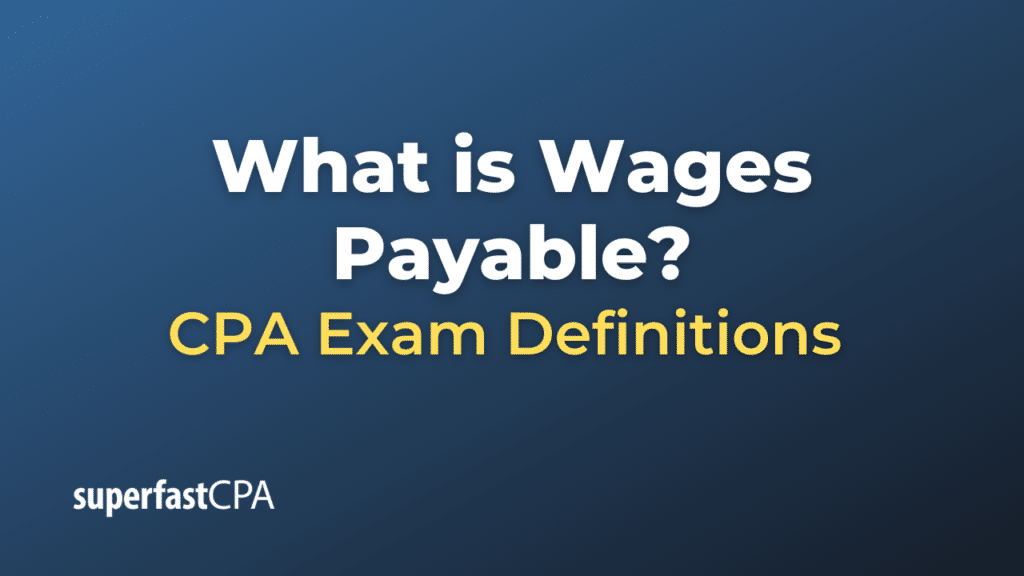Wages Payable
Wages Payable is an accounting term that represents a liability for an organization. It is the amount owed to employees for work performed but not yet paid at the end of an accounting period. This account is used in accrual accounting to ensure that expenses are matched with the revenues they help to generate, in accordance with the matching principle.
The Wages Payable account appears under the “Current Liabilities” section of the balance sheet, as it is generally expected to be settled within a short period (usually less than a year). When the company eventually pays the accrued wages to employees, the Wages Payable account is debited to reduce the liability, and the Cash account is credited to reflect the cash outflow.
Journal Entries Related to Wages Payable
When Wages are Accrued:
When wages are earned by employees but not yet paid, the following journal entry is made:
Debit: Wages Expense $X
Credit: Wages Payable $X
Here, “Wages Expense” is debited to recognize the cost of labor, and “Wages Payable” is credited to recognize the liability for unpaid wages.
When Accrued Wages are Paid:
When the company pays the accrued wages, the following journal entry is made to clear the liability:
Debit: Wages Payable $X
Credit: Cash $X
Example of Wages Payable
Let’s consider a simple example to illustrate how the “Wages Payable” account works in practice. In this example, we’ll follow a fictional company named “CafeDelight” which runs a small café.
- Company Name: CafeDelight
- Industry: Food and Beverage
- Number of Employees: 5
- Payroll Cycle: Bi-weekly
- Total Wages per Pay Cycle: $6,000
CafeDelight’s accounting period ends on December 31, and the employees are paid bi-weekly. The next payday is January 5 of the following year. The employees have worked one week since the last payday, accruing $3,000 in wages that have not yet been paid.
Accounting Treatment:
To properly reflect its financial position, CafeDelight needs to record an accrual for the unpaid wages of $3,000 as of December 31.
Journal Entry for Accrued Wages:
Here is the journal entry that CafeDelight will make on December 31 to recognize the wages payable:
Debit: Wages Expense $3,000
Credit: Wages Payable $3,000
In this journal entry:
- The debit to “Wages Expense” increases the wages expense on the income statement, recognizing the labor cost that has been incurred but not yet paid.
- The credit to “Wages Payable” recognizes a liability on the balance sheet, indicating that CafeDelight owes its employees $3,000.
Journal Entry for Paying Accrued Wages:
On January 5, when the next payday comes around, CafeDelight will pay its employees the $3,000 that was accrued. To record this transaction, the following journal entry is made:
Debit: Wages Payable $3,000
Credit: Cash $3,000
In this journal entry:
- The debit to “Wages Payable” reduces the liability on the balance sheet, bringing it back down to zero for this specific accrual.
- The credit to “Cash” reflects the cash payment, reducing the cash account on the balance sheet by $3,000.
Summary:
By recording “Wages Payable,” CafeDelight ensures that its financial statements accurately reflect the company’s financial obligations related to employee wages, even if the cash has not yet been paid. This allows for better financial reporting and decision-making for both internal management and external stakeholders.













